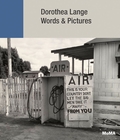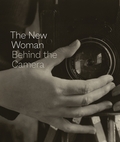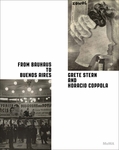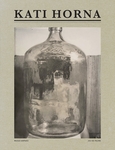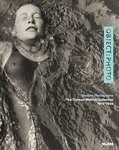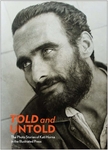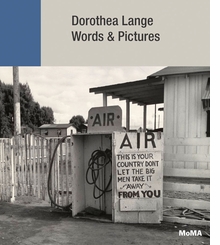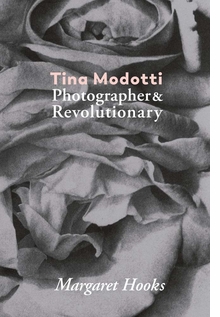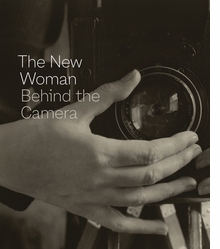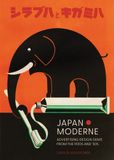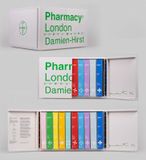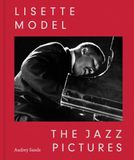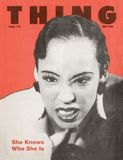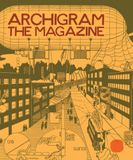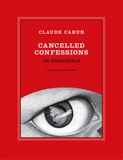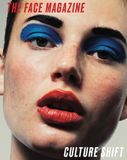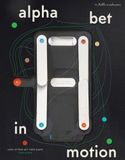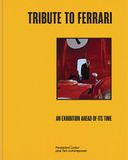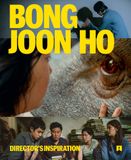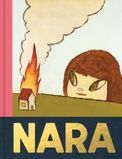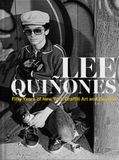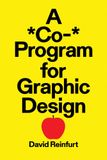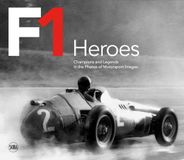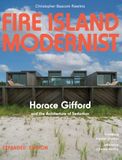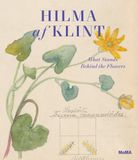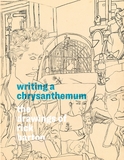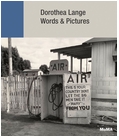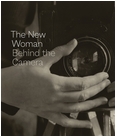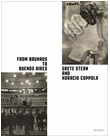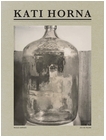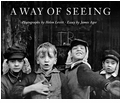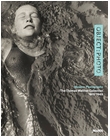| |||||||||||||||||||||||||
ARTBOOK BLOGEventsStore NewsMuseum Stores of the MonthNew Title ReleasesStaff PicksImage GalleryBooks in the MediaExcerpts & EssaysArtbook InterviewsEx LibrisAt First SightThe Artbook | D.A.P. 2025 Gift GuidesArtbook Featured Image ArchiveArtbook D.A.P. Events ArchiveDATE 1/1/2026 Happy New Year!DATE 12/25/2025 A revelation of our nation’s essential, quirky visual character in ‘Lee Friedlander: Christmas’DATE 12/16/2025 The acute gaze of Gabriele MünterDATE 12/11/2025 192 Books presents Raymond Foye and Peter Gizzi on The Song Cave's new edition of John Wiener’s 'Behind the State Capitol: Or Cincinnati Pike'DATE 12/9/2025 The atmospheric, rarely-seen watercolors of Winslow HomerDATE 12/8/2025 Pure winter glamour in ‘It’s Snowing!’DATE 12/3/2025 Flamboyant poses and melodramatic airs in 'Cecil Beaton's Fashionable World'DATE 11/30/2025 Artbook at Hauser & Wirth Los Angeles Bookstore presents Kelli Anderson and Claire L. Evans launching 'Alphabet in Motion'DATE 11/27/2025 Indigenous presence in 'Wendy Red Star: Her Dreams Are True'DATE 11/24/2025 Holiday Gift Guide 2025: Artful Crowd-PleasersDATE 11/22/2025 From 'Bottle Rocket' to 'The Phoenician Scheme' — the archives of Wes AndersonDATE 11/20/2025 The testimonial art of Reverend Joyce McDonaldDATE 11/18/2025 A profound document of art, love and friendship in ‘Paul Thek and Peter Hujar: Stay away from nothing’ | STAFF PICKS | FROM THE SHELVES
| ||||||||||||||||||||||||
in stock $60.00 Free Shipping UPS GROUND IN THE CONTINENTAL U.S. |
 Berenice Abbott: Portraits of Modernity
Berenice Abbott: Portraits of Modernity
Published by Fundación MAPFRE.
Text by Estrella de Diego, Gary Van Zante, Cara Hoffman.
A superbly printed, definitive volume on the beloved American modernist photographer
PUBLISHER
Fundación MAPFRE
BOOK FORMAT
Clth, 9.5 x 11.75 in. / 248 pgs / 190 duotone.
PUBLISHING STATUS
Pub Date 4/23/2019
Active
DISTRIBUTION
D.A.P. Exclusive
Catalog: SPRING 2019 p. 15
PRODUCT DETAILS
ISBN 9788498447040 TRADE
List Price: $65.00 CAD $82.00 GBP £52.00
AVAILABILITY
In stock
in stock $65.00 Free Shipping UPS GROUND IN THE CONTINENTAL U.S. |
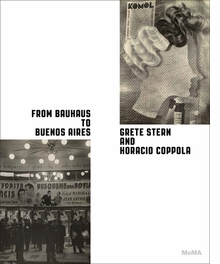 From Bauhaus to Buenos Aires: Grete Stern & Horacio Coppola
From Bauhaus to Buenos Aires: Grete Stern & Horacio Coppola
Published by The Museum of Modern Art, New York.
Edited with text by Roxana Marcoci, Sarah Meister. Text by Jodi Roberts.
Published to accompany the first US museum exhibition of the work of German-born Grete Stern and Argentinean Horacio Coppola, From Bauhaus to Buenos Aires explores the individual accomplishments and parallel developments of two of the foremost practitioners of avant-garde photography in Europe and Latin America. The book traces their artistic development from the late 1920s, when Stern established a pioneering commercial studio, ringl + pit, with her friend Ellen (Rosenberg) Auerbach, and Coppola began groundbreaking experimentations with photography in his native Argentina, to their joint studies at the Bauhaus and travels through Europe in the early 1930s, through the mid-1950s, by which time they had firmly established the foundations of modern photography in Buenos Aires. The couple effectively imported the lessons of the Bauhaus to Latin America, and revolutionized the practice of art and commercial photography on both sides of the Atlantic by introducing such innovative techniques as photomontage, embodied in Stern's protofeminist works for the women's journal Idilio, and through Coppola's experimental films and groundbreaking images for the photographic survey Buenos Aires 1936. Featuring a selection of newly translated original texts by Stern and Coppola, and essays by curators Roxana Marcoci and Sarah Meister and scholar Jodi Roberts, From Bauhaus to Buenos Aires is the first publication in English to examine the critical intersections that defined the notable careers of these two influential artists.
Grete Stern (1904–99) began taking private classes with Walter Peterhans—soon to become head of photography at the Bauhaus—in Berlin in 1927. In Buenos Aires during the same period, Horacio Coppola (1906–2012) initiated his photographic experimentations and in 1929 founded the Buenos Aires Film Club to introduce foreign films to Argentine audiences. His burgeoning interest in new modes of photographic expression led him to the Bauhaus in 1932, where he met Stern and they began their joint history. Following the close of the Bauhaus in 1933, Stern and Coppola fled Germany and established themselves briefly in London before embarking for Buenos Aires in 1935. There they mounted an exhibition in the offices of the avant-garde literary magazine Sur, announcing the arrival of modern photography in Argentina.
Roxana Marcoci is a Senior Curator in the Department of Photography at The Museum of Modern Art, New York.
Sarah Meister is a Curator in the Department of Photography at The Museum of Modern Art, New York.
Jodi Roberts is a scholar of Latin American art, and is currently a Curatorial Assistant in the Department of Painting and Sculpture at The Museum of Modern Art, New York.
PUBLISHER
The Museum of Modern Art, New York
BOOK FORMAT
Clth, 9.5 x 12 in. / 256 pgs / illustrated throughout.
PUBLISHING STATUS
Pub Date 5/26/2015
Active
DISTRIBUTION
D.A.P. Exclusive
Catalog: SPRING 2015 p. 74
PRODUCT DETAILS
ISBN 9780870709616 TRADE
List Price: $60.00 CAD $79.00
AVAILABILITY
In stock
in stock $60.00 Free Shipping UPS GROUND IN THE CONTINENTAL U.S. |
 Kati Horna
Kati Horna
Published by RM/Museo Amparo/Jeu de Paume.
Text by Petar Baki, Jean François Chevrier, Estrella de Diego, Juan Manuel Bonet, Norah Horna, Ángeles Alonso Espinosa.
The photographic oeuvre of Kati Horna (1912-2000) spans decades, geographical boundaries and visual practices. Horna witnessed the fall of the Austro-Hungarian Empire; the outbreak of World War I, which ousted her from Budapest--after which she moved to Berlin, then Paris; and the Spanish Civil War, after which World War II prompted her final move to Mexico, her adopted country. It was in Mexico that Horna found her artistic community, among the Surrealist ex-pats Leonora Carrington, Remedios Varo and Edward James. Even as a war photographer, she appropriated Surrealist photomontage, developing an original, intimate style of photojournalism. This superbly produced volume celebrates her extensive and diverse work, much of which has been previously unpublished or available only in limited circulation, and allows us to appreciate the incredible range of her oeuvre, from Surrealist to documentary photography. Featured alongside these photos are a chronology of Horna's life, essays by Peter Baki, Jean-Francois Chevrier, Estrella de Diego, Juan Manuel Bonet and Jos Antonio Rodriguez and a text by Horna's daughter, accompanied by documentary material from her personal archive.
PUBLISHER
RM/Museo Amparo/Jeu de Paume
BOOK FORMAT
Clth, 9.25 x 12 in. / 352 pgs / 160 color.
PUBLISHING STATUS
Pub Date 7/31/2014
Out of stock indefinitely
DISTRIBUTION
D.A.P. Exclusive
Catalog: FALL 2014 p. 102
PRODUCT DETAILS
ISBN 9788415118732 TRADE
List Price: $65.00 CAD $87.00 GBP £51.35
AVAILABILITY
Not available
STATUS: Out of stock indefinitely. |
 Lola Álvarez Bravo and the Photography of an Era
Lola Álvarez Bravo and the Photography of an Era
Published by RM/Museo Casa Estudio Diego Rivera y Frida Kahlo.
Text by James Oles, Adriana Zavala, Rachael Arauz, Deborah Dorotinsky, Ana Garduño, Karen Cordero, Cecilia Olivares, Cristóbal Andrés Jácome, Javier Vázquez et al.
Lola Álvarez Bravo was a pioneer of photomontage and a leading figure--along with Frida Kahlo, Tina Modotti, Diego Rivera and others--in Mexico’s post-revolution cultural renaissance. Lola Álvarez Bravo and the Photography of an Era accompanies a touring exhibition presented at the Museo Casa Estudio Diego Rivera y Frida Kahlo in Mexico City, the Museum of Latin American Art in Long Beach, California and the Center for Creative Photography at the University of Tucson in Arizona, home of Álvarez Bravo’s archives. It gathers 100 photographs and includes her well-known portraits of Kahlo and Rivera as well as photographs only recently discovered in the González Rendón archive. The selection not only demonstrates the great richness of the material contained in the archive, but also throws new light on Álvarez Bravo’s working methods and provides a deeper understanding of the complexity of her career. The photographs convey her uses of Surrealism and photomontage (many examples of which are published here for the first time), as well as her mastery of various genres, from portraits of famous intellectuals and close friends to documentary images of urban and rural poverty in Mexico.
Born Dolores Martinez de Anda to wealthy parents in the state of Jalisco, Mexico, Lola Álvarez Bravo (1990–1993) was abandoned by her mother in her early youth; following her father’s death, in her teen years she was sent to live with the family of her half-brother in Mexico City. It was here that she met the young Manuel Alvarez Bravo, whom she married in 1925. She received her first commission in 1936, photographing the colonial choir stalls of a former church, and in 1951 she opened an art gallery and was the first person to exhibit the paintings of Frida Kahlo.
PUBLISHER
RM/Museo Casa Estudio Diego Rivera y Frida Kahlo
BOOK FORMAT
Paperback, 8.25 x 11.75 in. / 156 pgs / 100 bw.
PUBLISHING STATUS
Pub Date 3/31/2013
Out of print
DISTRIBUTION
D.A.P. Exclusive
Catalog: SPRING 2013 p. 59
PRODUCT DETAILS
ISBN 9788415118374 TRADE
List Price: $45.00 CAD $60.00
AVAILABILITY
Not available
STATUS: Out of print | 00/00/00 For assistance locating a copy, please see our list of recommended out of print specialists |
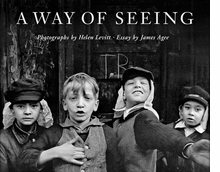 Helen Levitt: A Way of Seeing
Helen Levitt: A Way of Seeing
Published by Walther König/Film Documents LLC.
Text by James Agee.
The ultimate edition of Helen Levitt’s classic of New York City street photography, with new high-quality reproductions
PUBLISHER
Walther König/Film Documents LLC
BOOK FORMAT
Hardcover, 9.25 x 7.75 in. / 120 pgs / 63 duotone.
PUBLISHING STATUS
Pub Date 6/16/2020
Out of print
DISTRIBUTION
D.A.P. Exclusive
Catalog: FALL 2020 p. 16
PRODUCT DETAILS
ISBN 9781733601801 TRADE
List Price: $55.00 CAD $77.00
AVAILABILITY
Not available
STATUS: Out of print | 00/00/00 For assistance locating a copy, please see our list of recommended out of print specialists |
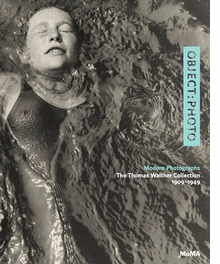 Object:Photo. Modern Photographs: The Thomas Walther Collection 1909-1949
Object:Photo. Modern Photographs: The Thomas Walther Collection 1909-1949
Published by The Museum of Modern Art, New York.
Edited with text by Mitra Abbaspour, Lee Ann Daffner, Maria Morris Hambourg. Text by Quentin Bajac, Jim Coddington, Constance McCabe, Matthew Witkovsky, et al.
OBJECT:PHOTO contains brilliant photographs from the first half of the twentieth century--the most dynamic and radical period in the development of modern photography--but it explores them using a new approach: instead of privileging the content of the images, it shifts the dialogue to the photographic object--the actual, physical thing created by a particular artist using particular techniques at a precise time, surviving into the present with a unique history. This perspective provides new insight into the singular nature of each work and the density of references that each contains while also acknowledging the cultural importance of photography from the interwar period--as well as the rarity of its best examples. Recognition of this importance informed The Museum of Modern Art’s acquisition, in 2001, of the 341 modernist photographs that now constitute the Thomas Walther Collection, each presented in this volume in special 5 color reproductions and accompanied by an unprecedented degree of detailed information, constituting new standards for the field. OBJECT:PHOTO represents the culmination of four years of research by the Museum’s Departments of Photography and Conservation and by more than two dozen visiting scholars, demonstrating in its varied voices their remarkable collaborations with the works and with each other. Essays by historians, curators and conservators consider such topics as the political and cultural pressures shaping the formation of the photographic avant-garde in Europe, the reception of modernist photography at the time and in subsequent revivals of interest in it, the intellectual backgrounds that were then generating new histories of photography, the standards and rationale for material analysis of photographs and the physical qualities of the photographs in the Walther collection as evidence of the development of photographic materials during the period. Thematic object-based case studies demonstrate new multidimensional approaches to the photograph as a cultural and artistic object in its own right.
Mitra Abbaspour is an art historian and curator, formerly Associate Curator in the Department of Photography at the Museum of Modern Art.
Lee Ann Daffner is Conservator of Photographs at The Museum of Modern Art.
Maria Morris Hambourg is the founding curator of the Department of Photographs at the Metropolitan Museum of Art.
Quentin Bajac is The Joel and Anne Ehrenkranz Chief Curator of Photography at The Museum of Modern Art.
Jim Coddington has served as The Agnes Gund Chief Conservator at The Museum of Modern Art since 2002.
Constance McCabe is Head of the Photograph Conservation Department at The National Gallery of Art.
Matthew S. Witovsky is the Richard and Ellen Sandor Chair and Curator, Department of Photography, at The Art Institute of Chicago.
PUBLISHER
The Museum of Modern Art, New York
BOOK FORMAT
Clth, 9.5 x 12 in. / 400 pgs / 473 color.
PUBLISHING STATUS
Pub Date 1/31/2015
Out of stock indefinitely
DISTRIBUTION
D.A.P. Exclusive
Catalog: FALL 2014 p. 11
PRODUCT DETAILS
ISBN 9780870709418 TRADE
List Price: $75.00 CAD $99.00
AVAILABILITY
Not available
STATUS: Out of stock indefinitely. |
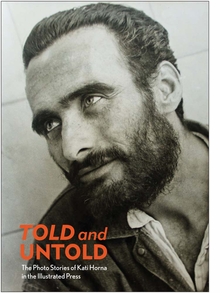 Told and Untold: The Photo Stories of Kati Horna in the Illustrated Press
Told and Untold: The Photo Stories of Kati Horna in the Illustrated Press
Published by Americas Society.
Edited by Gabriela L. Rangel. Foreword by Susan Segal. Text by Michel Otayek, Christina L. De Leon, Antonella Pelizzari, Andrea Geyer, et al.
Told and Untold, published in association with the first US solo exhibition dedicated to Kati Horna (1912–2000), features photographs—some never before seen—displayed alongside the newspapers and magazines in which they circulated. Though she is now perhaps best known as a Surrealist, Horna often defined herself as collaborator with the press, a definition that encompassed not only her activities as a field photographer during the Spanish Civil War, but also her work as a layout artist and photomonteur for anarchist publications. From her early years in interwar Paris through her late work produced in Mexico, this publication offers a comprehensive overview of Horna’s diverse practice, including her photographs, contact sheets, montaged cuttings and personal albums.
PUBLISHER
Americas Society
BOOK FORMAT
Clth, 7.5 x 10.5 in. / 188 pgs / 53 color / 65 duotone / 44 bw.
PUBLISHING STATUS
Pub Date 4/25/2017
Out of stock indefinitely
DISTRIBUTION
D.A.P. Exclusive
Catalog: SPRING 2017 p. 137
PRODUCT DETAILS
ISBN 9781879128781 TRADE
List Price: $40.00 CAD $54.00 GBP £35.00
AVAILABILITY
Not available
STATUS: Out of stock indefinitely. |
|
the source for books on art & culture
CUSTOMER SERVICE
orders@artbook.com
212 627 1999 ext 202
M-F 10-6 EST
Ingram Customer Care
800-937-8200 option 3
orders@dapinc.com
NEW YORK
Showroom by Appointment Only
75 Broad Street, Suite 630
New York NY 10004
Tel 212 627 1999
LOS ANGELES
Showroom by Appointment Only
818 S. Broadway, Suite 700
Los Angeles, CA 90014
Tel. 323 969 8985
ARTBOOK LLC
D.A.P. | Distributed Art Publishers, Inc.
All site content Copyright C 2000-2025 by Distributed Art Publishers, Inc. and the respective publishers, authors, artists. For reproduction permissions, contact the copyright holders.
The D.A.P. Catalog
www.artbook.com
